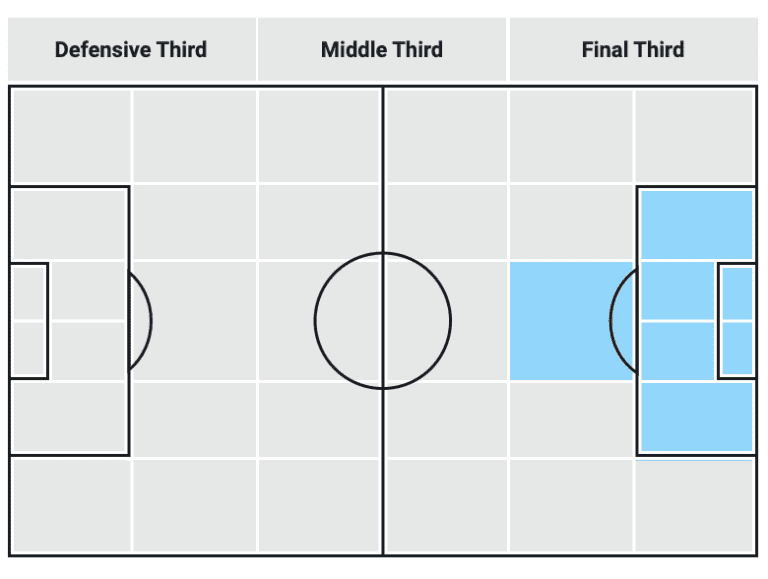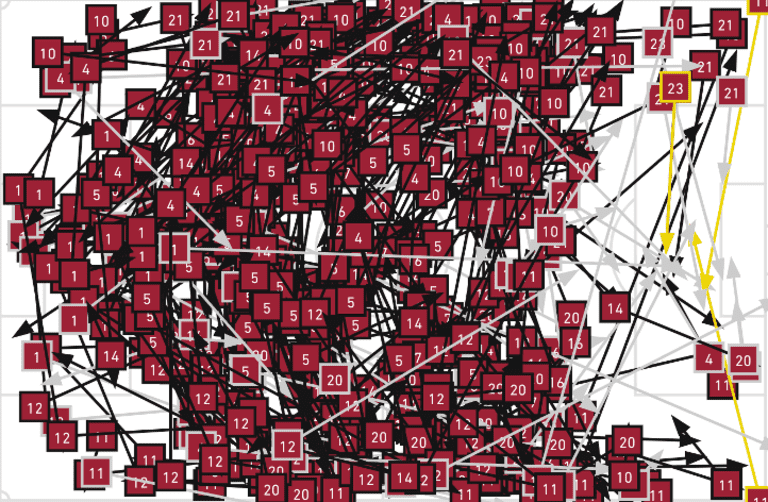Atlanta United hosted a pretty spectacular event this past Saturday evening. Mercedes-Benz Stadium held more than 40,000 people for a matchup with CF Montréal, making it the most attended soccer game in the world since the start of the COVID-19 pandemic.
It was loud, especially after Marcelino Moreno’s 94th-minute goal gave Atlanta a 1-0 win in front of their home fans. The goal sequence was lovely: a nice piece of footwork from George Bello, a good ball in from Jake Mulraney and a headed finish from Moreno combined to create an unforgettable moment.
The problem for Atlanta, though, is that there haven’t been enough lovely goal sequences under Gabriel Heinze so far this season.
Atlanta currently sit in fourth place (2W-1L-2D record) in the Eastern Conference after five games, which is good. But they've only scored four goals from open play this year, which is not so good. They're tied for the fifth-fewest open play goals in MLS and have generated the ninth-lowest amount of xG per game (1.06). The season is young, but it’s becoming clear that Heinze’s team has a chance creation problem. Including matches played in the Concacaf Champions League, the Five Stripes have only scored more than one goal in a game once in nine total matches.
Now, this isn’t intended to be a piece that callously tosses Atlanta under the bus. Like a handful of other MLS teams, Atlanta are dealing with the aftermath of having played additional CCL games early on in the year. They’re also trying to adjust to playing under a new manager and have dealt with some injuries and squad fluctuations over the season's first few weeks. Those are all major reasons why Atlanta have struggled to create chances in 2021.
But they aren’t the only reasons. Right now, Atlanta United are playing too safe.
Heinze has Atlanta dominating a score of possession metrics. They attempt and complete the most passes in the league on a per-game basis, have the longest possessions by more than two seconds and average more passes per possession than any other team in MLS. If we take a quick look back at Heinze’s last coaching stop, Velez Sarsfield in Argentina, none of those statistics look terribly surprising. In 2019-20, Heinze’s Velez Sarsfield averaged 59.7% possession in the Argentinian first division, according to FBref. In 2018-19, Velez Sarsfield averaged 58.4% possession. Heinze wants the ball – it’s non-negotiable.
However, when you’re a team that dominates possession, there’s a real danger of that possession becoming the end instead of the means. That’s why Pep Guardiola is famous for saying, “You have to pass the ball with a clear intention, with the aim of making it into the opposition's goal. It's not about passing for the sake of it.”
Atlanta United have fallen into the trap of passing the ball simply to pass the ball – and the numbers show it. Their passes have the highest expected completion percentage in MLS with 84.65%. What does that mean? Well, imagine if I passed the ball five feet to my left. The odds of me completing that pass are a lot higher than me completing a 40-yard diagonal. That’s the idea behind expected completion percentage. Atlanta, with their league-high expected completion percentage, play a lot of safe passes. The Philadelphia Union have the lowest expected completion percentage in MLS (71.87%) and play more aggressively in possession. More long balls, more direct play and more risks.
There’s no reason for Atlanta United to go all the way to the other extreme, but there's value in them hitting more aggressive passes into more dangerous places. Right now, Atlanta are 22nd in MLS in terms of passes completed per game into the box and the heart of Zone 14 (the area right on top of the box). If you want to raise your xG output, playing passes into these highlighted zones is a pretty good place to start.

Breaking lines with your passing is another key, and Atlanta United aren’t doing that right now. They're second-to-last in MLS in terms of passes attempted between the lines per game. Instead of a heavy dose of line-breaking passes or frequent expeditions into the blue zones shown above, it’s a lot of “U-Shaped” passing from Atlanta United.
In this clip, taken from the first half of Atlanta’s 1-1 draw with Inter Miami CF a couple of weeks ago, you can see a lack of numbers positioned between the lines. In turn, this leads to passes that go back and forth across the base of Atlanta’s three center back formation in the shape of a U.
“U-Shaped” passing surfaces far too often for Atlanta. You can see it in the above clip, and you can see it in their pass map from Saturday’s win over Montréal (who, to their credit, defended very, very well for 93 minutes).

The numbers (and the film) don’t reflect kindly on Atlanta’s on-ball work so far in 2021. However, I do sympathize with how challenging it is to use the ball to disorganize the opposing defense and create goal-scoring opportunities. It’s really, really hard. And it’s made even harder when your opponents sit back, compress space and block your passing angles, which is what Atlanta United’s opponents have mostly done.
Atlanta have attempted the most passes per game this year when there are at least seven defenders behind the intended receiver. That stat shows a couple of things. First, it shows that opposing head coaches are putting numbers behind the ball and daring Atlanta to break them down. Second, it shows that Atlanta haven't been able to disrupt those compact defenses.
The possession foundation is there for Heinze’s team, which should be encouraging for Atlanta fans. Atlanta can certainly keep the ball. But if they want to stay in the Eastern Conference’s top tier, they have to start turning their possession into chance creation. Moving the ball faster in possession, playing more aggressive passes and pulling defenders out of position and then sending runners into the vacated space between the lines would help.
A matchup with the red-hot Seattle Sounders on Sunday (4:30 pm ET | FOX, FOX Deportes), potentially without Ezequiel Barco (lower-body injury), isn’t the ideal setting to begin changing course. But hey, the road to giving the Mercedes-Benz Stadium crowd more to cheer about has to start somewhere.












